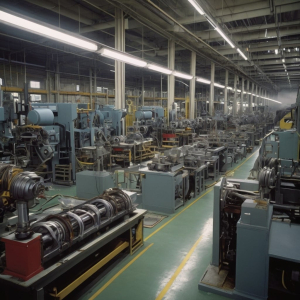Vacuum heat treatment is an advanced technology widely used in the automotive sector, especially for enhancing the mechanical properties of components like gears, shafts, and springs. It is a highly effective method for improving the strength, durability, and wear resistance of parts that undergo significant stress during their lifespan.
A technological revolution is quietly unfolding in the heart of India’s burgeoning automotive sector. The vacuum heat treatment process, which enhances the quality and performance of automotive parts, is emerging as a game-changer for manufacturers across the subcontinent. As India grows its position as the fifth-largest car manufacturer globally, the adoption of this advanced technology is not just a trend but a necessity for maintaining competitiveness in the international market.
The Rise of Vacuum Heat Treatment in India
The Indian heat treating market, valued at USD 4.70 billion in 2023, is on a trajectory of significant growth, with projections indicating a compound annual growth rate (CAGR) of 5.4% from 2024 to 2030.
This growth is largely driven by the automotive industry’s insatiable demand for high-performance, durable components that can withstand the rigors of modern vehicle operation.
Vacuum heat treatment offers a suite of benefits that traditional heat treatment methods struggle to match. By treating materials in a vacuum or low-pressure environment, manufacturers can prevent oxidation and contamination, resulting in parts with superior mechanical properties.
“The precision and consistency offered by vacuum heat treatment are unparalleled,” says Dr. Rajesh Kumar, a materials scientist at the Indian Institute of Technology, Delhi. “It’s not just about improving hardness or wear resistance; it’s about elevating the overall quality and lifespan of automotive components.”
Transforming Automotive Manufacturing

The impact of vacuum heat treatment on automotive parts is profound. From gears and bearings to engine components and brake systems, this process enhances load-bearing capacity, reduces friction, and improves thermal stability.
These improvements are critical for the efficient power transmission and overall vehicle operation that modern consumers demand.
Samvardhana Motherson, a leading Indian automotive component manufacturer with operating revenue of nearly a trillion Indian rupees in 2024, exemplifies the industry’s growth potential.
The company’s success is partly attributed to its adoption of advanced manufacturing processes, including vacuum heat treatment, for producing high-quality wiring harnesses, vision systems, and plastic components.
Economic Implications and Market Dynamics
The economic aspects of implementing vacuum heat treatment are compelling. While the initial investment in equipment and infrastructure is substantial, the long-term benefits far outweigh the costs. “Vacuum furnaces offer improved process quality, cost reduction, and increased production efficiency,” notes Anand Sharma, CEO of a prominent heat treatment equipment supplier in Mumbai. “For automotive manufacturers looking to compete on a global scale, this technology is not just an option; it’s a necessity.”
The automotive components industry in India has reached a valuation of approximately 74.1 billion U.S. dollars, with a significant portion generated by Indian Original Equipment Manufacturers (OEMs). This robust manufacturing base provides fertile ground for the adoption of advanced technologies like vacuum heat treatment.
Conclusion
As India’s automotive industry evolves, vacuum heat treatment stands at the forefront of technological innovation. Its ability to produce high-quality, durable components while offering economic and environmental benefits makes it an indispensable tool for manufacturers aiming to compete in the global market.
Vacuum heat treatment for the automotive industry provides a superior method for treating parts requiring high performance. As this technology continues to advance, it will likely play an even larger role in India’s automotive sector, ensuring that manufacturers can produce more durable and efficient components to meet the demands of modern vehicles.

